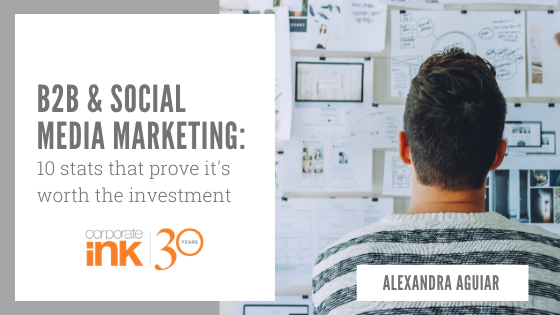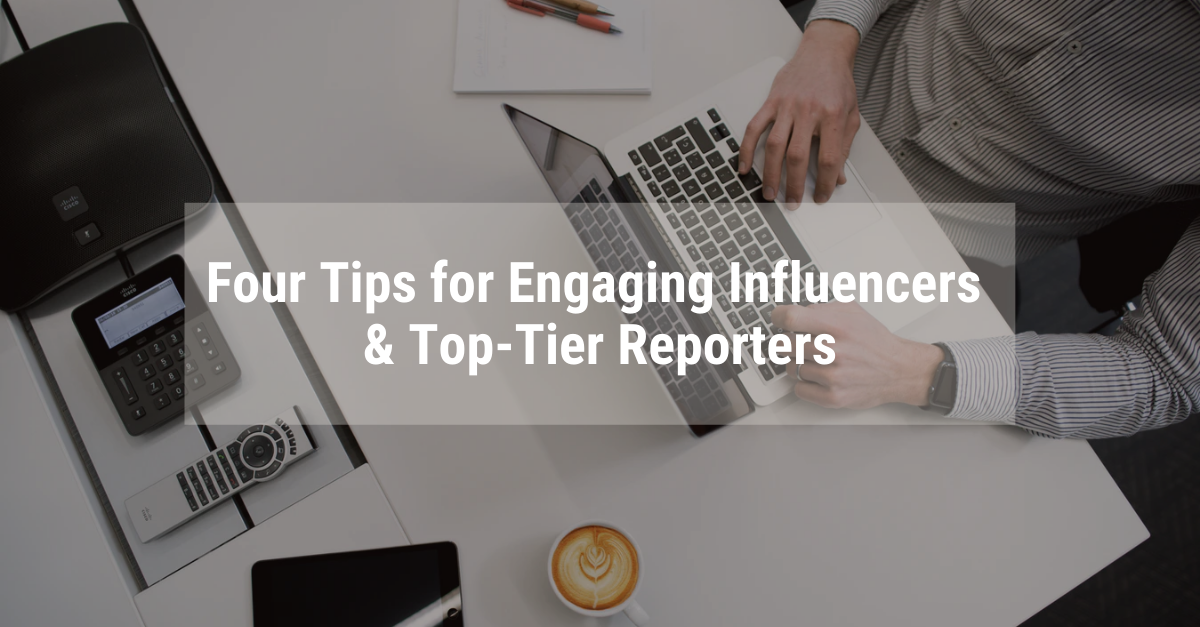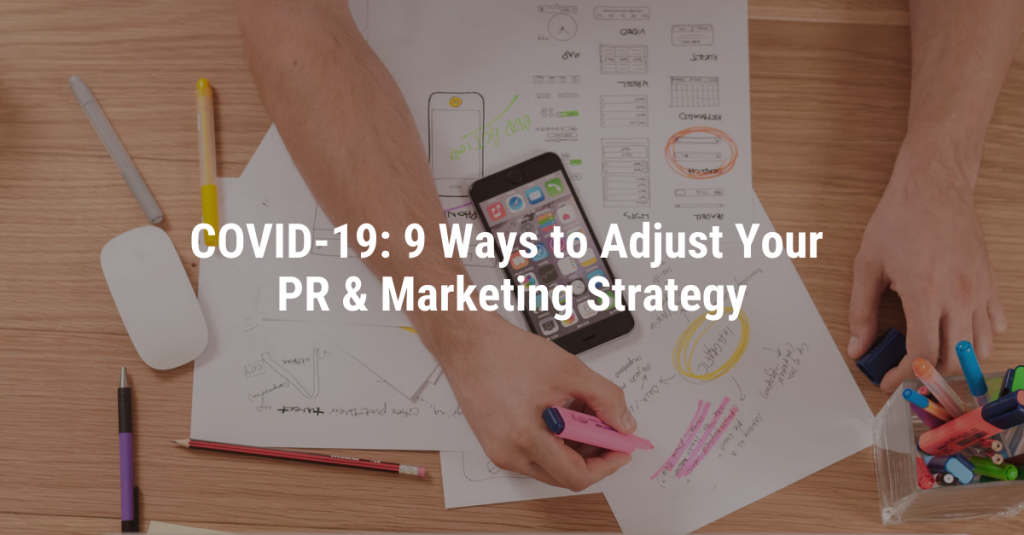
B2B Social Media Marketing: 10 stats that prove it’s worth the investment
March 18, 2020
Four tips for engaging influencers & top-tier reporters
April 20, 2020
COVID-19: 9 Ways to Adjust your Marketing and PR Strategy
The coronavirus has impacted every part of our lives. Our thoughts go first and foremost to the people that have been severely affected, and our heroes on the front lines. I also find myself thinking about our clients and peers, who are tasked with marketing and communicating in an incredibly complex, sensitive and uncertain environment.
Our new marketing reality: The best-built plans are now in disarray. Events are canceled, and campaigns and trends that were hot two months ago are no longer relevant. As marketing leaders, our job is to adjust our strategies, refine our stories and where possible, use the time and budget to explore new channels and approaches.
Here are nine ideas and considerations for marketing amidst the COVID-19 crisis:
1. Facilitate a community think tank.
Your customers are all experiencing the same uncertainty. That gives you an opportunity to facilitate and add value. Consider creating an online community that allows practitioners to ask questions, share ideas and concerns, and help solve each other’s problems. There are several great examples of this in action across different markets, including our client base
2. Commit to storytelling and amplify your best content.
Media and news consumption is way up. According to ComScore, news consumption increased an incredible 61% the week of March 16 – 22. Continue to invest in PR and media relations (make sure your story is relevant, helpful and sensitive to the current situation), and consider leveraging paid amplification budgets to expand the reach of your best press from the past year. Along with social targeting, platforms like Outbrain and Taboola are relatively affordable options for increasing visibility.
3. YouTube advertising and targeting.
We all love YouTube. But how many of us are leveraging the channel in our paid B2B marketing strategies? YouTube is the world’s second-largest search engine and second most-visited website today. Marketers can target based on both Google search history and viewing behavior. And for most ad formats, brands only pay when a user watches for at least 30 seconds or engages with your CTA. Given the rise in traffic during the COVID-19 outbreak, now is a smart time for brands to test the waters, if they haven’t already.
4. Authentically connect with your audience on the platforms they prefer.
Where does Instagram fit into your B2B marketing strategy? What about TikTok (yes, seriously)? LinkedIn, Facebook and Twitter are powerful channels, but if you stop there, you may be limiting your brand’s reach. With social distancing in full effect, most of us are spending more time on social media. Brands that invested early are benefiting: one influencer firm found that there’s been a 22% increase in Instagram campaign impressions and a 27% engagement increase on TikTok from February to March.
While organic and sponsored content has already proven effective for B2B brands on Instagram, we’re still exploring what’s possible with TikTok. As a B2B marketer, if you question the wisdom of investing in “consumer” platforms, consider that today, more than ever, marketing is B2H – business to human, not B2B or B2C. That means two things: all channels are fair game, and you need to build an authentic, platform-specific experience to be effective, which takes time and commitment.
5. Check your messaging.
Do you have planned advertisements or email campaigns scheduled to launch in Q2? What about social posts? Take the time to audit scheduled campaigns and ensure the tone and focus is reflective of the current situation. Several brands are already facing backlash for failing to amend or remove campaigns quickly enough. What was comical and bold in December risks being tasteless today.
6. Invest in LinkedIn’s lead generation capabilities.
We’re seeing great success with sponsored LinkedIn lead-gen and click-to-web campaigns. Now, with almost every Q2 event canceled, the market’s appetite for digital engagement and self-learning is growing fast. If your program is heavily reliant on industry events for leads, consider shifting budget to LinkedIn programs. For brands that are already investing here, make time to test different approaches, like the new “conversation ads”, which allow you to offer a “choose your own path”-type experience, with customized CTAs.
7. Be philanthropic.
We’re all in this crisis together. Tech companies are among the best positioned to leverage their resources to make a difference. If that results in great PR, stronger brand loyalty and a more committed team – all the better. But focus first on doing your part, not the resulting PR.
8. Be relevant.
COVID-19 affects everyone in different ways. How does it impact your customers and prospects? It’s likely their first, second and third concern. Ask your customers where they are feeling the most uncertainty and pain, and continue to educate and add value accordingly.
9. Recognize your industry heroes.
So many people around the world are doing truly incredible work during this crisis. How about recognizing and profiling one hero per week in your target market? It’s an incredibly simple way to recognize societal contributions, strengthen relationships and build emotional connections in your market.
Other recommendations: take your events digital, focus on helping (not promoting), explore niche channels for telling your story, and most importantly, be good to yourself and each other.






